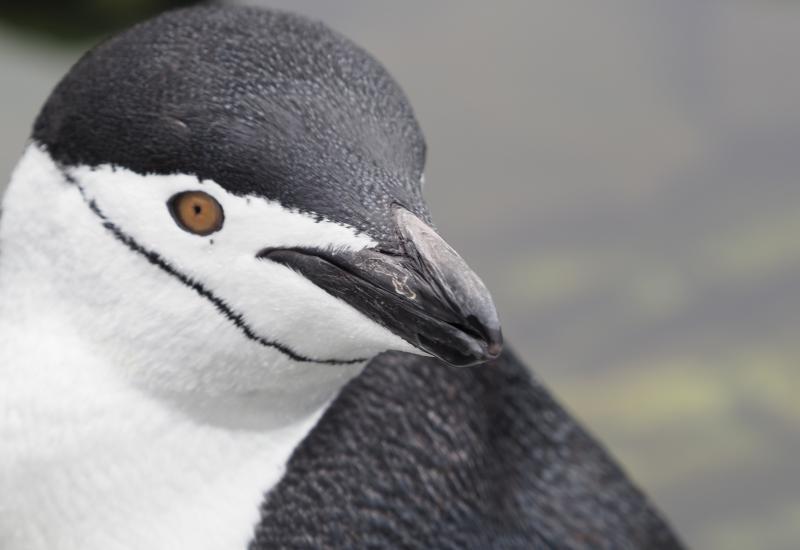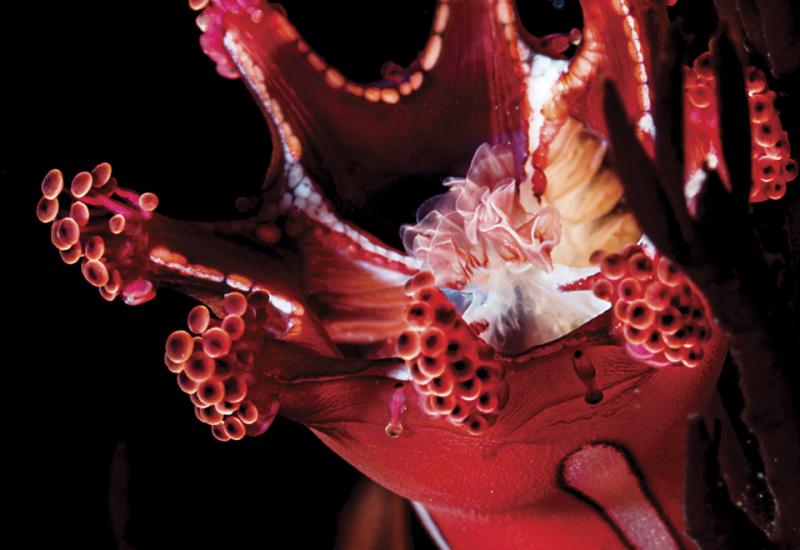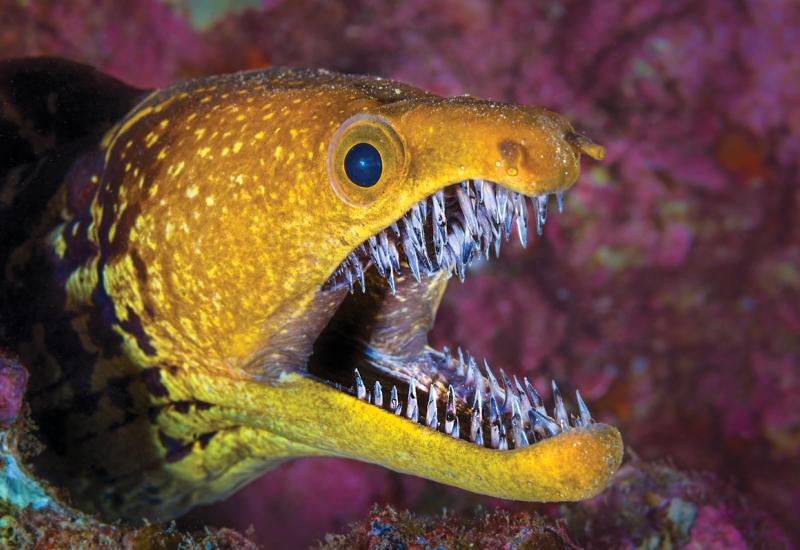Diving with Pacific Manta Rays in Mexico's Socorros Islands [Photo Gallery]
People speak of having spiritual experiences, religious experiences, even mystical experiences. I had never personally encountered anything that had fallen into any of those categories, nor did I give much credence when I read or heard others speak of them. But that all changed one day under the sea.
I took a live-aboard dive trip to Socorro, Mexico (aka the Revillagigedo Islands), where the expectation was to see whales, giant manta rays, dolphins and sharks. I’ve been a diver long enough to keep my thoughts realistic and accepted that we would see whatever decided to show up on our dives, and wouldn’t see what didn’t. It was as simple as that, but as we motored the more than 24 hours toward the Revillagigedo Islands, the small group of mostly uninhabited islands (except for staff at a Naval station and a small naval garrison) that lie approximately 240 miles from Cabo San Lucas, I couldn’t stop my excitement from building at the prospect of what might show up.
The first couple days of the trip were great — we saw sharks and dolphins and I was thrilled. The third day in, our divemaster briefed us about something new for me —swimming with giant manta rays. He explained these creatures could be intimidating due to their size — the wingspan averages 20 feet across — but that they are harmless to humans. He emphasized that as tempted as we might be, divers should never touch the mantas. He also said while we shouldn’t be afraid, but we should be cautious not to get in the way of those giant wings.
My dive buddy and I hit the water and we safely descended. Out of the blue came a sight so spectacular I found myself holding my breath for just a moment — a giant ray floated toward me. I wasn’t intimidated by his size, but sensed awe like never before. He came closer and then turned sharply, and I expected he would swim away, but instead he came back toward me. Several more mantas joined us, and we began a sort of dance that lasted the entire dive. I noted the two remoras (also known as “suckerfishes”) attached to each manta and remembered how the divemaster had informed us that mantas always have — for unknown reasons — two remoras attached. It had always been assumed the remoras feed off parasites on their hosts, but I learned they hitch a ride by attaching to the mantas and wait for the bits of food dropped by their hosts. This was apparent when the manta started to feed — the remoras detached themselves and hung back a bit.
When I began taking photos, it almost seemed as if each one read my mind and knew what I wanted him to do, and gladly accommodated me. I truly felt I bonded to these creatures, these genial souls. In spite of their size, I was never frightened or anxious. Their eyes conveyed a peace and serenity I carried out of the water with me. I was the conductor to their symphony and it was unlike any experience I’d had in all my years of diving.
Craig Dietrich lives in South Florida. He was a Naval photographer during both Operation Desert Shield and Desert Storm, and he continued his photography career after the Navy by becoming a children’s and family photographer. After being a topside photographer for more than 20 years, he decided to combine his two greatest loves: photography and diving. He is a member of the prestigious South Florida Underwater Photography Society. To view more of his work, visit Dietrich Underwater.
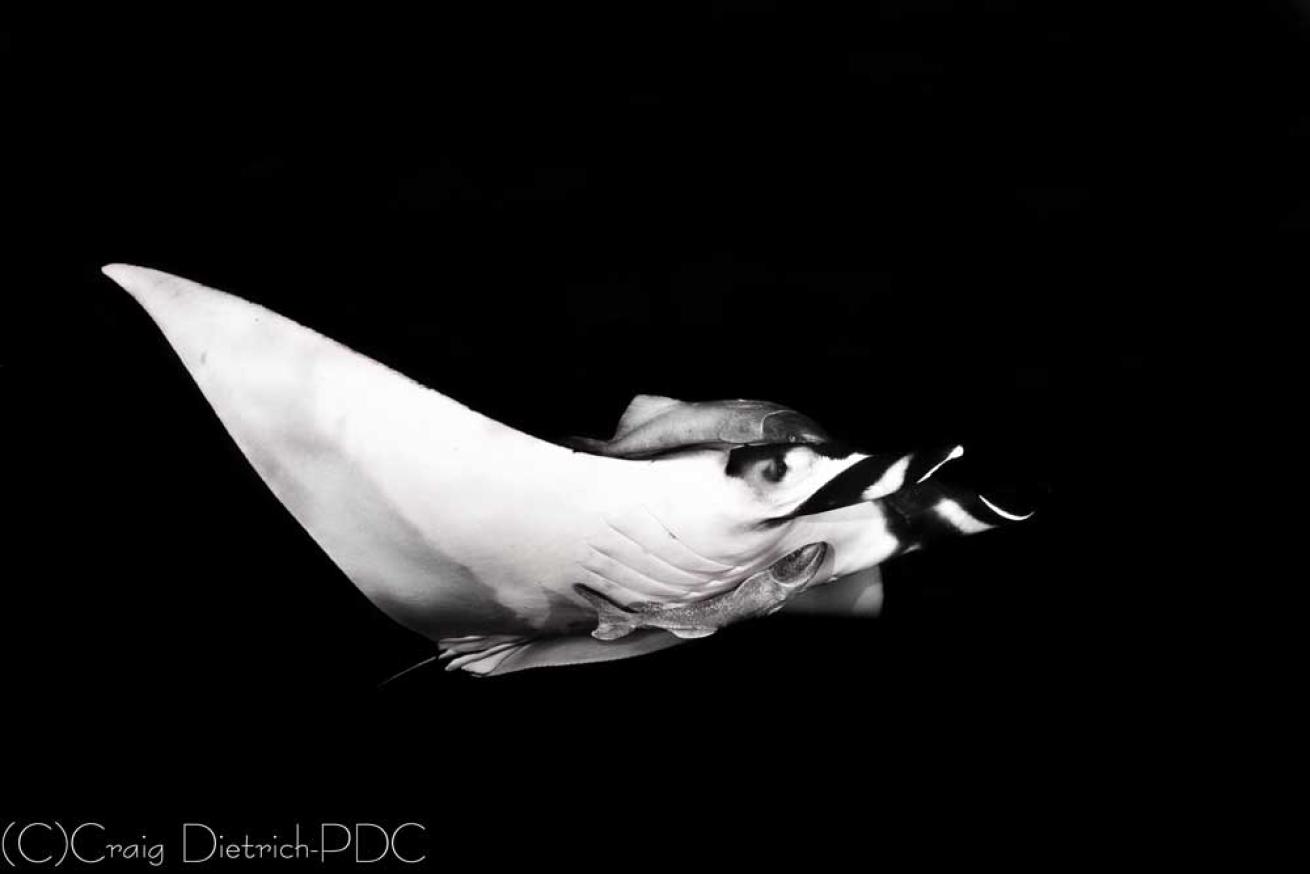
Craig DietrichManta rays can reach up to 25 feet in length and weigh as much as 3,000 pounds.
People speak of having spiritual experiences, religious experiences, even mystical experiences. I had never personally encountered anything that had fallen into any of those categories, nor did I give much credence when I read or heard others speak of them. But that all changed one day under the sea.
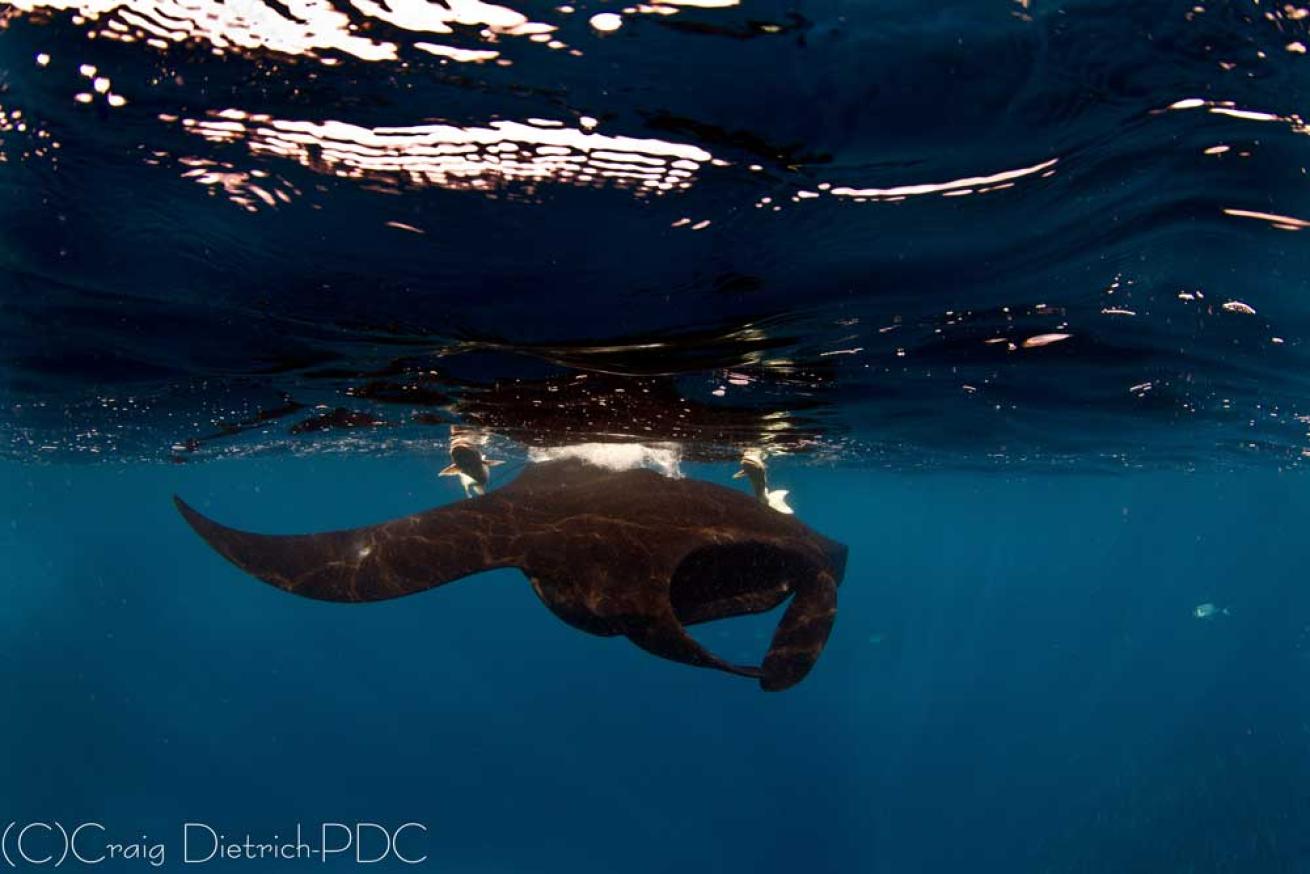
Craig DietrichManta rays have the largest brain-to-body ratio of all sharks and rays.
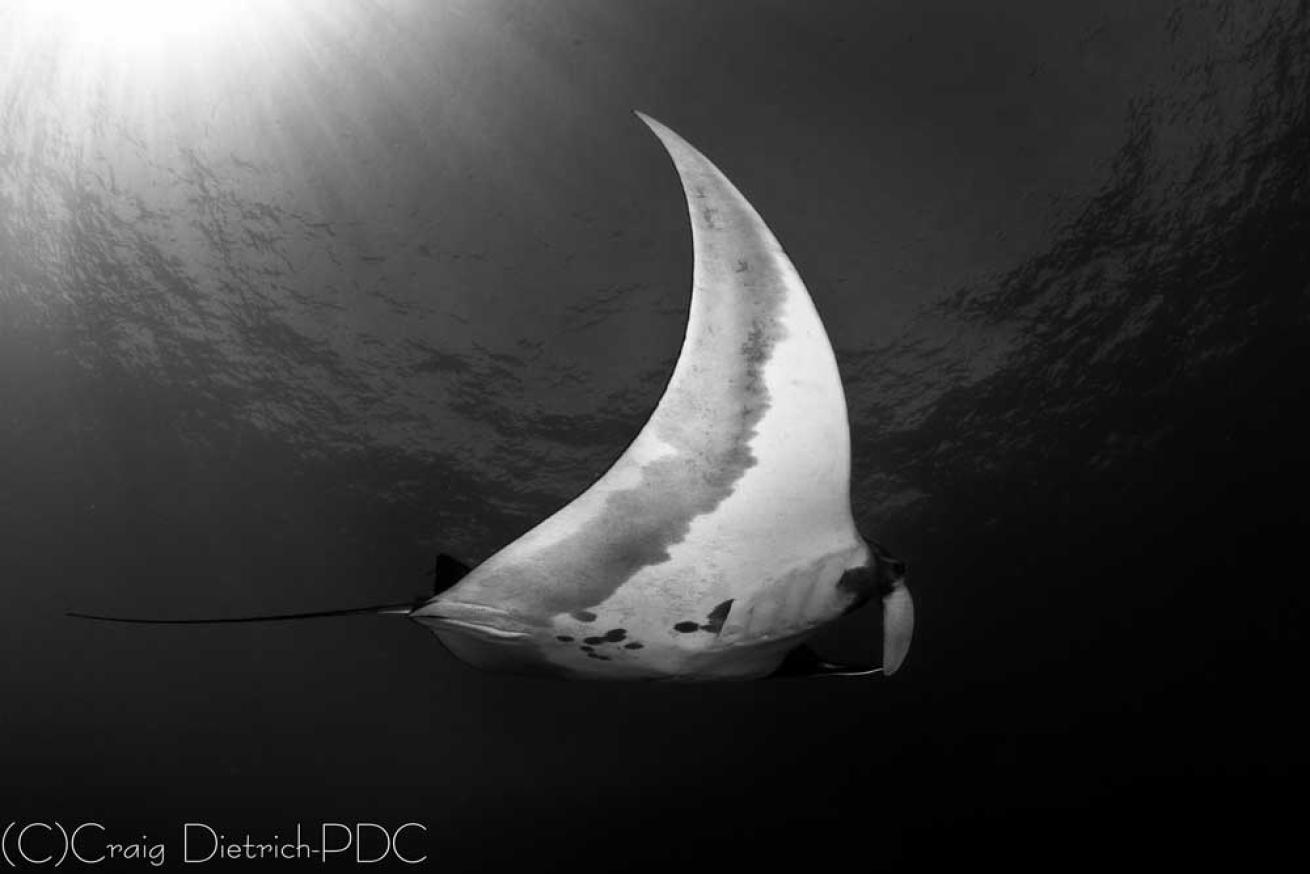
Craig DietrichMantas are amazing when it comes to the acrobatics that they display.
I took a live-aboard dive trip to Socorro, Mexico (aka the Revillagigedo Islands), where the expectation was to see whales, giant manta rays, dolphins and sharks. I’ve been a diver long enough to keep my thoughts realistic and accepted that we would see whatever decided to show up on our dives, and wouldn’t see what didn’t. It was as simple as that, but as we motored the more than 24 hours toward the Revillagigedo Islands, the small group of mostly uninhabited islands (except for staff at a Naval station and a small naval garrison) that lie approximately 240 miles from Cabo San Lucas, I couldn’t stop my excitement from building at the prospect of what might show up.
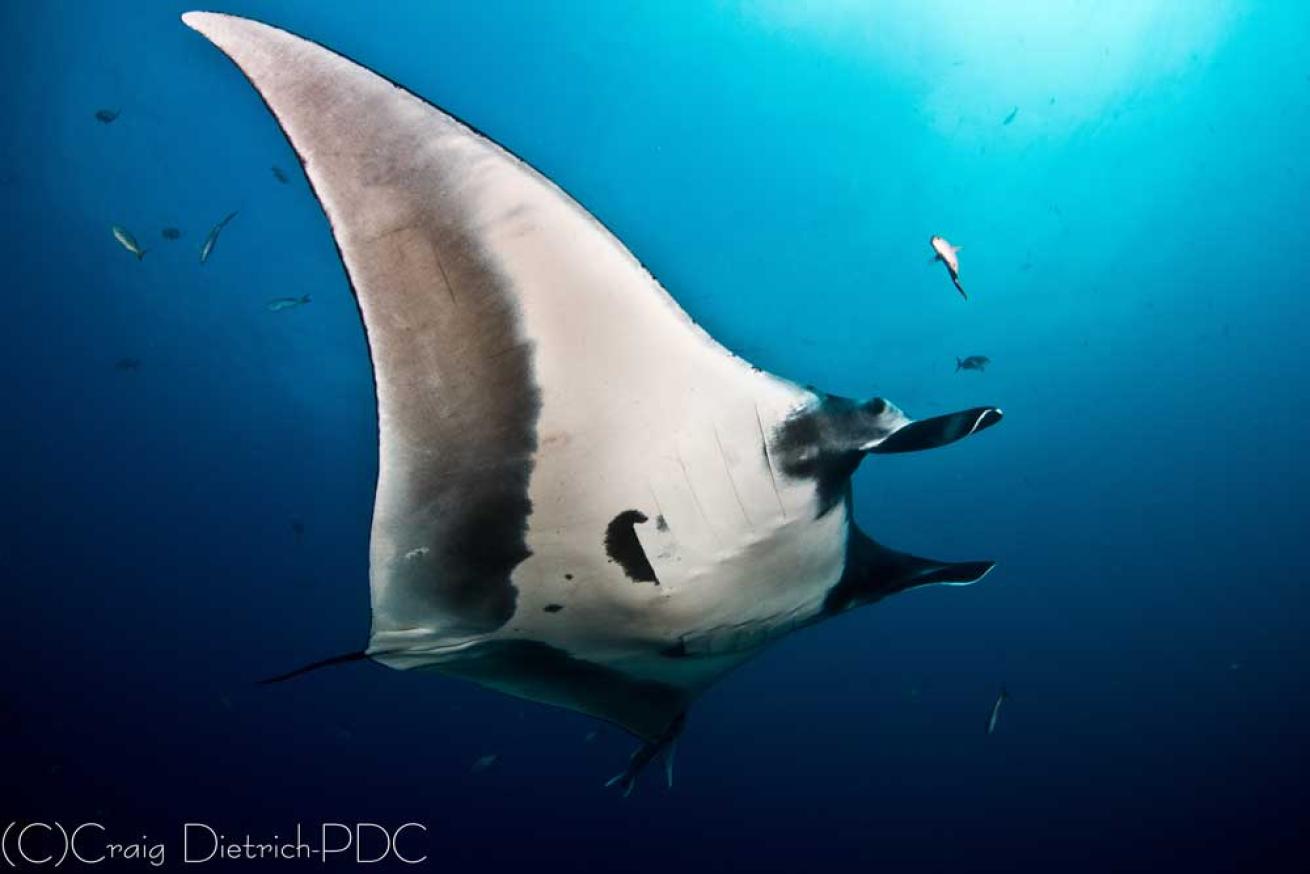
Craig DietrichNot all manta rays migrate, but some do.
The first couple days of the trip were great — we saw sharks and dolphins and I was thrilled. The third day in, our divemaster briefed us about something new for me —swimming with giant manta rays. He explained these creatures could be intimidating due to their size — the wingspan averages 20 feet across — but that they are harmless to humans. He emphasized that as tempted as we might be, divers should never touch the mantas. He also said while we shouldn’t be afraid, but we should be cautious not to get in the way of those giant wings.
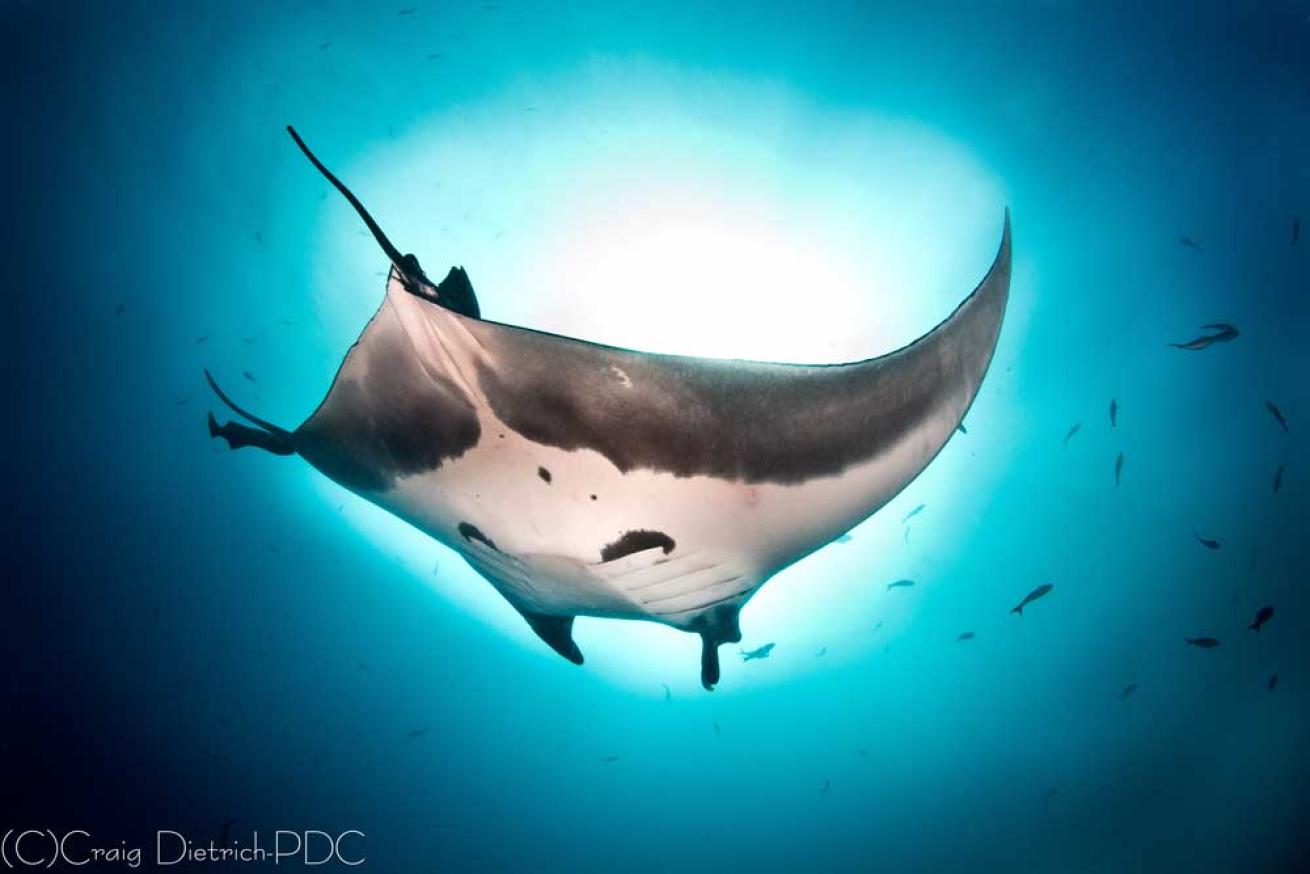
Craig DietrichClassified as a fish, mantas are preyed on by orcas and sharks.
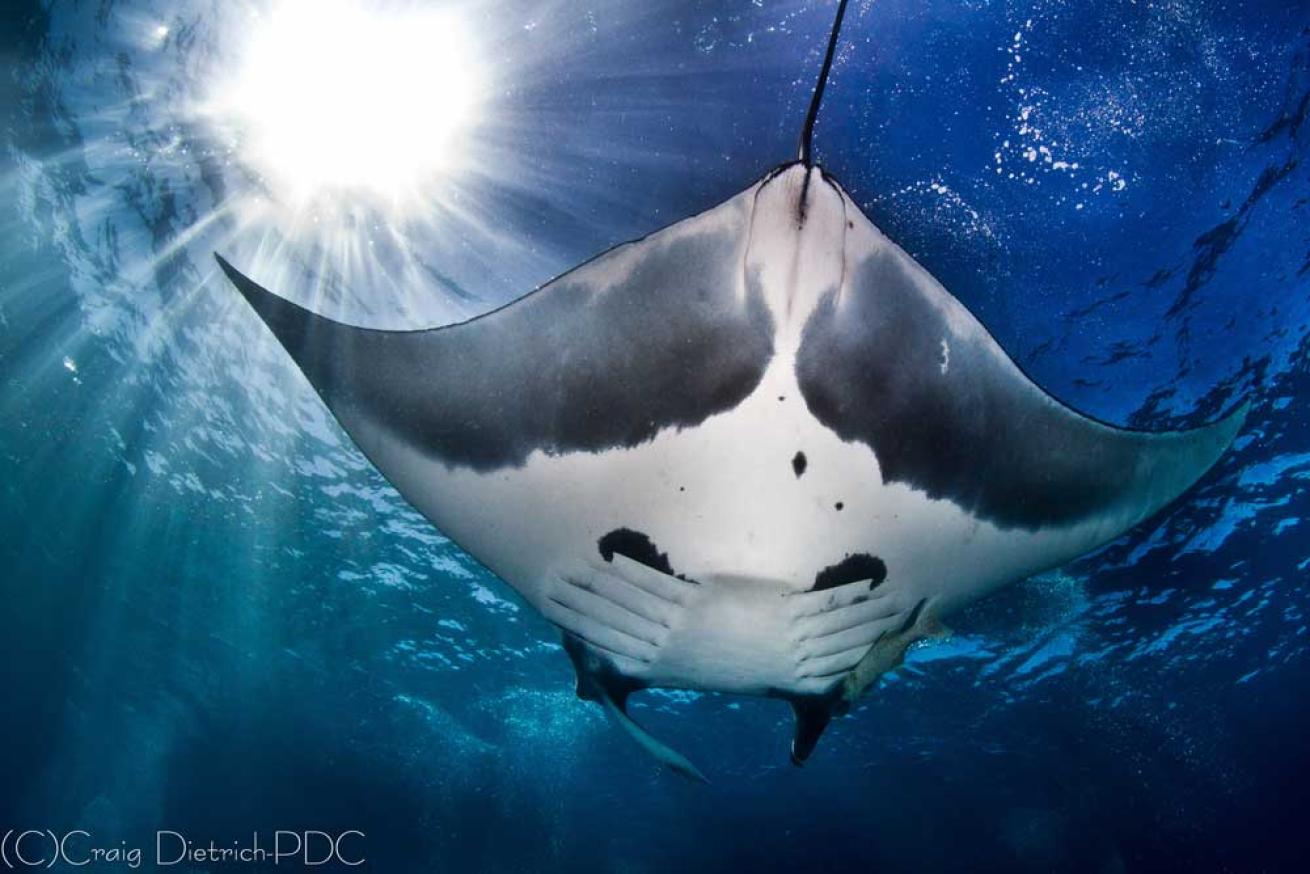
Craig DietrichA manta's wingspan can reach 20 feet across.
My dive buddy and I hit the water and we safely descended. Out of the blue came a sight so spectacular I found myself holding my breath for just a moment — a giant ray floated toward me. I wasn’t intimidated by his size, but sensed awe like never before. He came closer and then turned sharply, and I expected he would swim away, but instead he came back toward me. Several more mantas joined us, and we began a sort of dance that lasted the entire dive. I noted the two remoras (also known as “suckerfishes”) attached to each manta and remembered how the divemaster had informed us that mantas always have — for unknown reasons — two remoras attached. It had always been assumed the remoras feed off parasites on their hosts, but I learned they hitch a ride by attaching to the mantas and wait for the bits of food dropped by their hosts. This was apparent when the manta started to feed — the remoras detached themselves and hung back a bit.
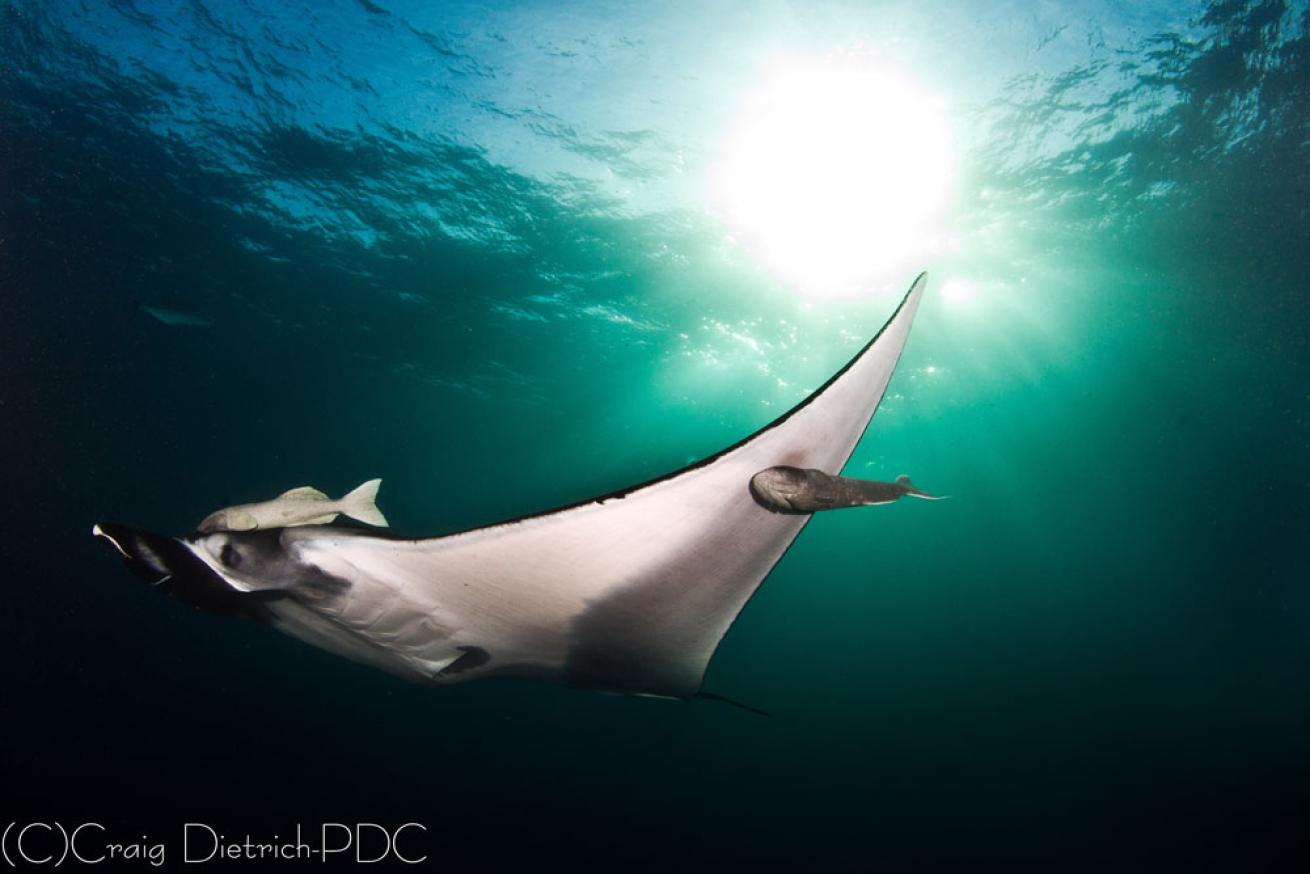
Craig DietrichYou will very rarely find manta rays in captivity due to their size.
When I began taking photos, it almost seemed as if each one read my mind and knew what I wanted him to do, and gladly accommodated me. I truly felt I bonded to these creatures, these genial souls. In spite of their size, I was never frightened or anxious. Their eyes conveyed a peace and serenity I carried out of the water with me. I was the conductor to their symphony and it was unlike any experience I’d had in all my years of diving.
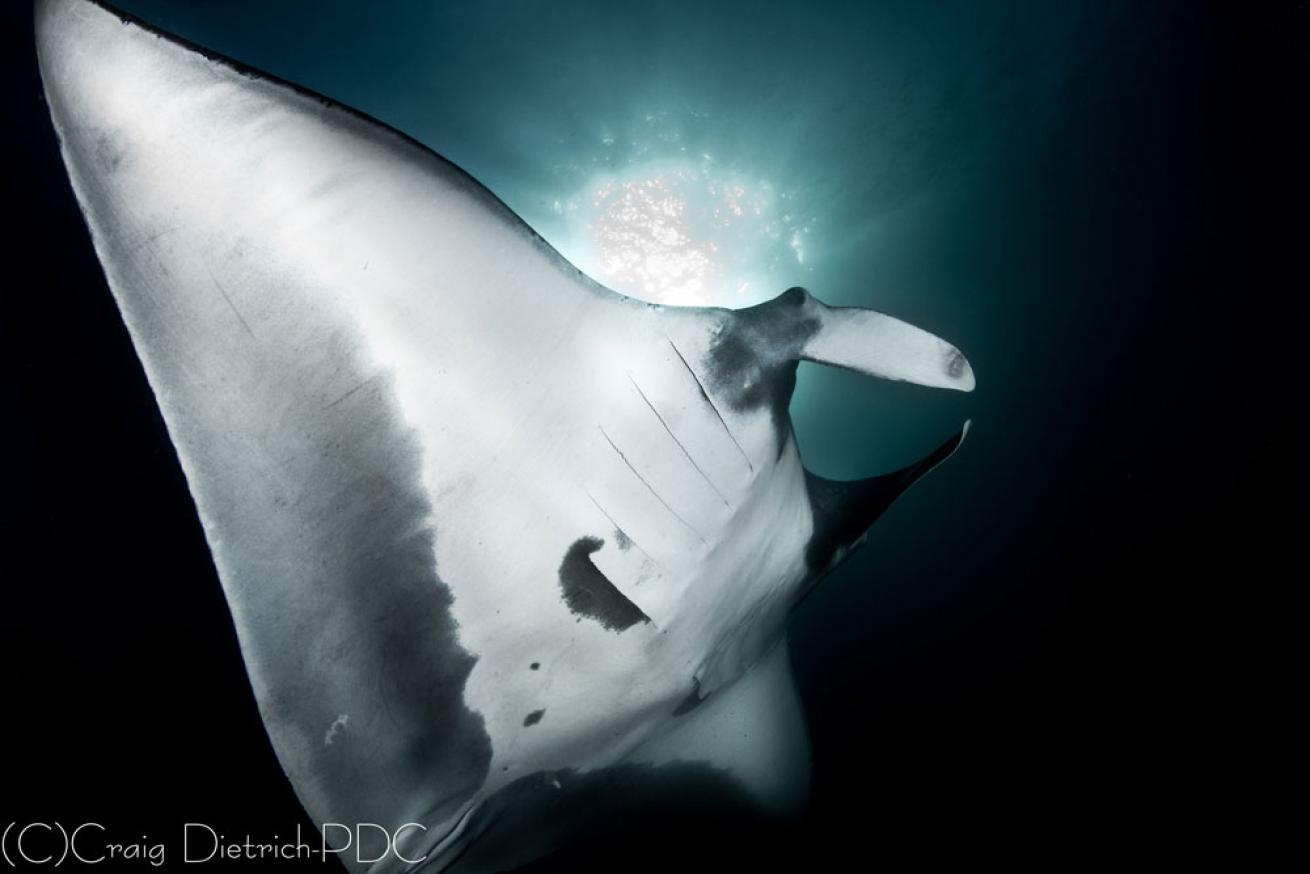
Craig DietrichManta rays do possess teeth, but they are filter-feeders.
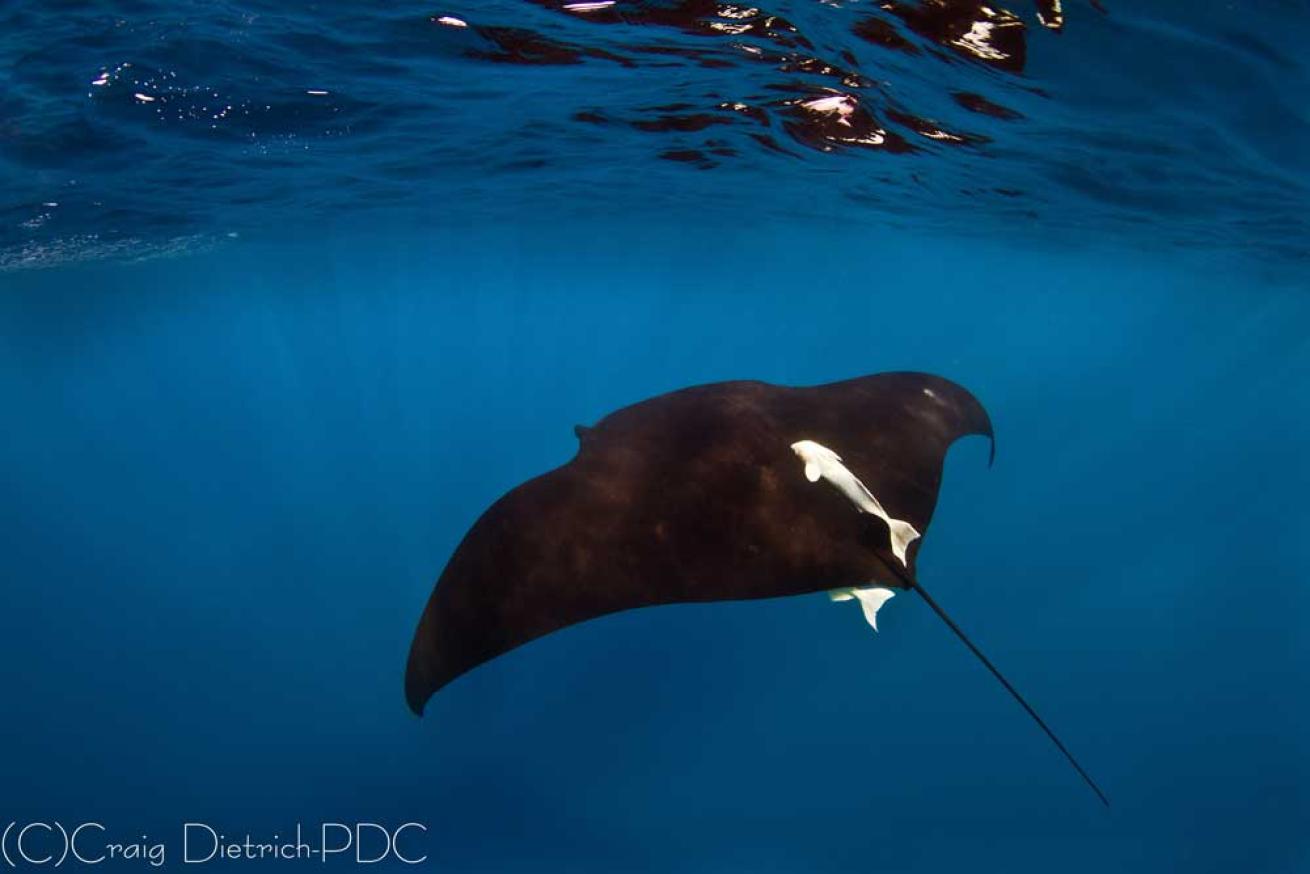
Craig DietrichThe average life span for a manta ray is 20 years.
Craig Dietrich lives in South Florida. He was a Naval photographer during both Operation Desert Shield and Desert Storm, and he continued his photography career after the Navy by becoming a children’s and family photographer. After being a topside photographer for more than 20 years, he decided to combine his two greatest loves: photography and diving. He is a member of the prestigious South Florida Underwater Photography Society. To view more of his work, visit Dietrich Underwater.

